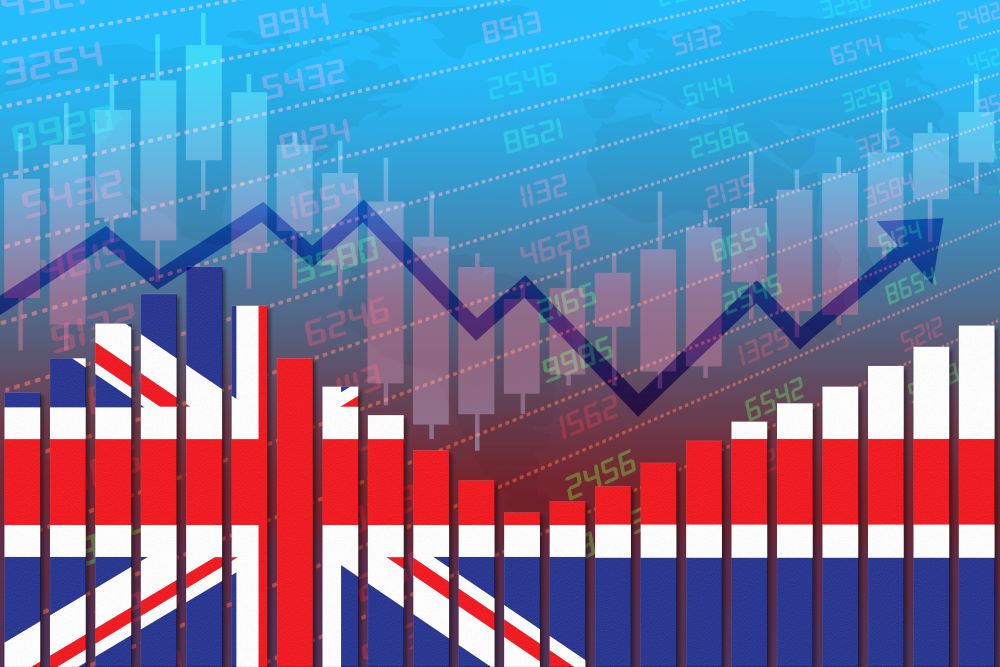
The UK’s business activity has declined for the third month running, according to new statistics published as part of a key index for the manufacturing and services sector.
PMI slide
Reported by the FT, the S&P Global/Cips Flash UK composite purchasing managers’ index remained below the 50-mark, having witnessed a 0.1 bump to 48.6 between September and October.
Any number below 50 indicates a contraction of business activity, as also took place in August and September.
Chief business economist at S&P Global Market Intelligence, Chris Williamson, said that a fall in exports as well as high interest rates and the ongoing cost-of-living crisis were largely responsible.
Both services and manufacturing fell during the last three months, with economists including Ruth Gregory of Capital Economics suggesting that the stats show “a mild recession is underway”, but also signalled that “the Bank of England has finished hiking interest rates”.
Manufacturing descent
Manufacturing statistics have been in the red for the longest period since the 2008 financial crisis, now at eight consecutive months.
Others such as Investec’s Sandra Horsfield said the findings should be “taken with a pinch of salt”, after early estimates for September’s figures were revised.
This set of stats come as the House of Commons has issued its own report on key economic indicators of manufacturing output.
They show that, between July and August this year, manufacturing was down 0.8%. Computer, electronic and optical product manufacturing fell particularly hard, dropping by 3.2%.
There is cause for cautious optimism among the House of Commons figures, however, as they suggest that manufacturing output was 1.7% higher in the three months leading up to August than in the three leading up to May.
Unemployment uncertainty
The UK’s unemployment data may be seriously flawed, some economists have suggested in other statistics news this week.
The Office for National Statistics (ONS) has released new figures showing the country’s unemployment level stands at 4.2%, a rise of 0.2% on the previous quarter.
The ONS has itself called the statistics “experimental”. This is because they have not been derived from the usual labour survey but from benefit and tax claim information, as the volume of survey responses has continued to decline post-pandemic.
The Evening Standard reports that Darren Morgan, director of economic statistics at the ONS, said the new approach “maintains the accuracy of our key statistics”, while adding that the department is preparing an “improved Labour Force Survey”.
Economics commentator for the FT Chris Giles argued in a recent column that “we cannot have confidence in any of these official figures”, and suggested that their role in Bank of England decision-making on interest rates was compromised.
The US business picture
The UK statistics drop coincides with the release of similar figures for the American economy, where the business environment is also turbulent according to the Administrative Office of the US Courts.
Data for the year ending 30 September 2023 suggests that corporate bankruptcies have increase by 30% on the previous year, per Reuters.
Scott Stuart from the non-profit corporate restructuring group Turnaround Management Association made the case that this situation is a correction following an “unnaturally long period of easy money”. He added:
"Companies that were distressed did not have to look at the ills just underneath the surface which needed to be addressed. That era is done."
The broader US economy did, however, see a strong performance in the last quarter according to the US Commerce Department’s Bureau of Economic Analysis.
The country’s third-quarter GDP grew 4.9% as consumer and government spending continued to ramp up. Businesses did witness a decline in investment for the first time in two years, however.
